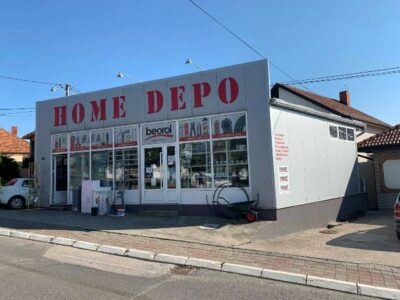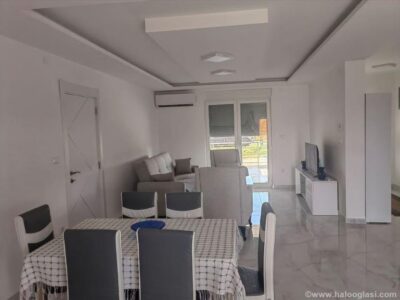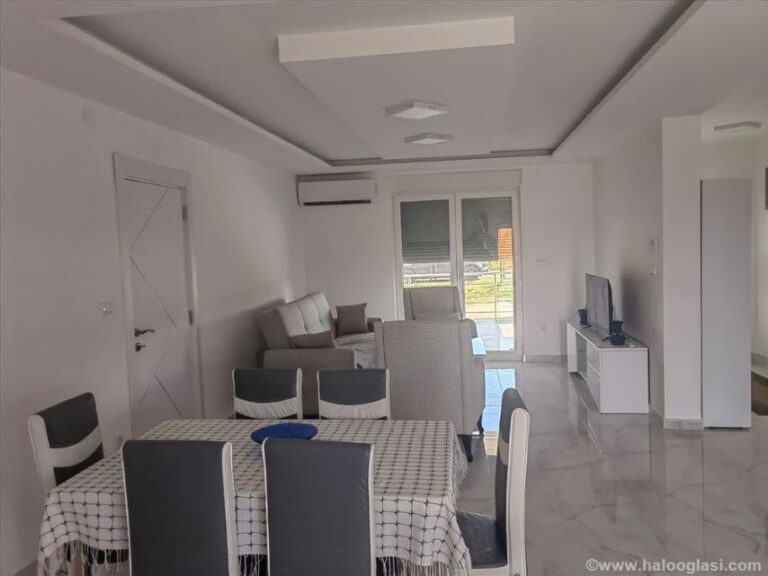Real estate platforms often need to manage various types of entities, and property developers represent a crucial segment of the market. WPResidence’s API provides comprehensive endpoints for managing developer entities programmatically. This guide explores how to leverage these endpoints for efficient developer management.
Who Are Developers in WPResidence?
In WPResidence real estate theme, developers are entities responsible for creating and developing real estate projects. They’re stored as custom post types (estate_developer) with associated metadata. Developers typically:
- Create multiple properties or developments
- Have company information (contact details, location, etc.)
- Maintain portfolios of past, current, and upcoming projects
- Link to agencies and agents selling their properties
Developers differ from agencies in that they focus on property creation rather than sales, though the system allows for relationships between these entities.
Listing Developers: Retrieving Data via API
To retrieve a list of developers with filtering capabilities, use the developers endpoint.
Endpoint: POST /wpresidence/v1/developers
This endpoint accepts POST requests with a JSON body containing filter parameters.
Request Parameters
{
"page": 1,
"posts_per_page": 10,
"fields": "ID,title,description,developer_email,developer_phone",
"meta": {
"developer_city": {
"value": "Miami",
"compare": "=",
"type": "CHAR"
},
"developer_projects": {
"value": 5,
"compare": ">",
"type": "NUMERIC"
}
},
"taxonomies": {
"property_category": [12, 15],
"property_action_category": [7]
}
}
Key parameters include:
- page: Pagination control (integer, default: 1)
- posts_per_page: Results per page (integer, default: 10)
- fields: Comma-separated field list to include in response
- meta: Object with metadata filters
- key: Field name to filter by
- value: Value to compare against
- compare: Comparison operator (
=,!=,>,>=,<,<=,LIKE,NOT LIKE,IN,NOT IN,BETWEEN,NOT BETWEEN,EXISTS,NOT EXISTS) - type: Data type (
NUMERIC,BINARY,CHAR,DATE,DATETIME,DECIMAL,SIGNED,TIME,UNSIGNED)
- taxonomies: Object with taxonomy names as keys and term IDs as values
Response Structure
{
"status": "success",
"query_args": {
"post_type": "estate_developer",
"paged": 1,
"posts_per_page": 10,
"meta_query": [...],
"tax_query": [...]
},
"data": [
{
"ID": 345,
"title": "Coastal Development Group",
"description": "Luxury beachfront development specialists",
"developer_email": "info@coastaldevelopment.com",
"developer_phone": "305-555-1212"
},
// Additional developers...
],
"total": 27,
"pages": 3
}
Viewing Developer Information
To retrieve detailed information about a specific developer, use the single developer endpoint.
Endpoint: GET /wpresidence/v1/developer/{id}
Where {id} is the developer’s post ID.
Request Parameters
- id: (Required) Developer ID (path parameter)
- fields: (Optional) Comma-separated field list
Example:
GET /wpresidence/v1/developer/345?fields=ID,title,description,developer_email,developer_phone,developer_website,developer_license
Response Example
{
"ID": 345,
"title": "Coastal Development Group",
"description": "Luxury beachfront development specialists with over 20 years of experience creating premium oceanfront properties.",
"developer_email": "info@coastaldevelopment.com",
"developer_phone": "305-555-1212",
"developer_website": "https://coastaldevelopment.com",
"developer_license": "FL-DEV-78901"
}
Adding a New Developer (Request Structure & Fields)
New developers can be created using the developer creation endpoint.
Endpoint: POST /wpresidence/v1/developer/add
Authentication Requirements
- Valid JWT token in request header
- User must be logged in
- User must have
publish_estate_developerscapability
Required Fields
- developer_name: Company/developer name
- developer_email: Valid email address
Full Request Example
{
"developer_name": "Urban Horizon Developers",
"developer_email": "contact@urbanhorizon.com",
"developer_description": "Urban Horizon specializes in sustainable mixed-use developments in metropolitan areas. Our focus is on creating environmentally friendly buildings with modern amenities.",
"developer_phone": "415-555-7890",
"developer_mobile": "415-555-7891",
"developer_skype": "urbanhorizon",
"developer_address": "525 Market St, San Francisco, CA 94105",
"developer_website": "https://urbanhorizon.com",
"developer_license": "CA-DEV-45678",
"developer_taxes": "47-1234567",
"developer_facebook": "urbanhorizondev",
"developer_twitter": "urbanhoriz_dev",
"developer_linkedin": "urban-horizon-developers",
"developer_pinterest": "urbanhorizondev",
"developer_instagram": "urbanhorizon_dev",
"developer_custom_data": [
{"label": "Founded", "value": "2009"},
{"label": "Projects Completed", "value": "27"},
{"label": "Sustainability Certification", "value": "LEED Platinum"}
],
"featured_image": "https://example.com/images/urban-horizon-logo.jpg",
"user_registration": {
"username": "urbanhorizon",
"email": "contact@urbanhorizon.com",
"password": "secure_password_here",
"role": "developer"
}
}
Optional Fields
- developer_custom_data: Array of label-value pairs for custom information
- featured_image: URL to image for developer profile
- user_registration: Creates WordPress user associated with developer
- Taxonomy terms (by providing taxonomy names as field keys with term IDs)
Response
{
"status": "success",
"developer_id": 789,
"message": "Developer created successfully."
}
Updating Developer Profiles
Developer information can be updated through the developer update endpoint.
Endpoint: PUT /wpresidence/v1/developer/edit/{id}
Where {id} is the developer’s post ID.
Authentication and Permissions
- Valid JWT token
- User must be logged in
- Developer must exist and be correct post type
- User must be developer creator or have admin rights
Request Example
{
"developer_name": "Urban Horizon Sustainable Developers",
"developer_description": "Updated company description with new project focus areas and community initiatives.",
"developer_phone": "415-555-9999",
"developer_custom_data": [
{"label": "Founded", "value": "2009"},
{"label": "Projects Completed", "value": "32"},
{"label": "Sustainability Certification", "value": "LEED Platinum, Living Building Challenge"},
{"label": "Community Investment", "value": "$15M"}
],
"featured_image": "https://example.com/images/urban-horizon-new-logo.jpg"
}
Only include fields that need updating; omitted fields remain unchanged.
Response
{
"status": "success",
"developer_id": 789,
"message": "Developer updated successfully."
}
Removing a Developer from the System
Developers can be permanently removed using the deletion endpoint.
Endpoint: DELETE /wpresidence/v1/developer/delete/{id}
Where {id} is the developer’s post ID.
Authentication and Permissions
The API verifies:
- JWT token validity
- User login status
- Developer existence
- User has permission (creator or admin)
System Changes on Deletion
When a developer is deleted:
- Developer post and all metadata are removed
- Any WordPress user associations are updated (
user_developer_idmeta is cleared) - Properties may need reassignment if linked to this developer
Response
{
"status": "success",
"message": "Developer deleted successfully."
}
Linking Developers to Properties & Agencies
Developer-Property Relationships
Properties can be associated with developers through:
- Property Meta: A property has a
property_developermeta field - Developer Projects List: Developers can maintain lists of project IDs
To associate a property with a developer during property creation/update:
{
"property_title": "Skyline Tower",
"property_developer": 789,
"other_property_fields": "..."
}
Developer-Agency Relationships
Developers and agencies can have partnerships through:
- Cross-referencing: An agency can list preferred developers and vice versa
- Project-based: Specific properties can link both a developer and selling agency
When creating an agency that represents developers:
{
"agency_name": "Metropolitan Real Estate",
"associated_developers": [789, 790, 791],
"other_agency_fields": "..."
}
Debugging API Errors
Common Error Types
- Authentication Errors
jwt_auth_failed: Invalid/missing JWT tokenrest_forbidden: User lacks required permissions
- Validation Errors
rest_missing_field: Required field missingrest_invalid_email: Invalid email formatrest_invalid_developer: Invalid developer IDrest_developer_not_found: Developer not found
- Server Errors
user_registration_failed: Error during user creation
Troubleshooting Steps
- Check Request Format
- Verify endpoint URL is correct
- Ensure JSON payload is valid
- Validate required fields are present
- Verify Authentication
- Confirm JWT token is valid and included
- Check user has necessary permissions
- Review Response Details
- Error responses include details about the issue:
{ "code": "rest_missing_field", "message": "Missing mandatory field: developer_email", "data": { "status": 400 } } - Test with Minimal Data
- Start with only required fields
- Add optional fields incrementally
- Isolate problematic fields
- Check Server Logs
- Review WordPress debug logs for additional details
- Look for PHP errors that might not appear in API responses
Best Practices for Error Handling
- Implement Retry Logic
- Add exponential backoff for temporary failures
- Set maximum retry attempts
- Log Request/Response Pairs
- Keep detailed logs for debugging
- Include timestamps, request IDs, and context
- Validate Data Before Sending
- Implement client-side validation
- Check data types and format
- Handle Errors Gracefully
- Display user-friendly error messages
- Provide recovery options when possible
Conclusion
WPResidence’s API provides robust tools for managing real estate developers programmatically. By understanding the available endpoints, required parameters, and best practices, you can create efficient integrations that automate developer management workflows.
Key takeaways:
- Use field filtering to optimize response payloads
- Implement proper error handling and validation
- Follow security best practices with authentication
- Consider the relationships between developers, properties, and agencies
- Test thoroughly with various data scenarios
With these practices in place, the WPResidence API can significantly enhance your real estate platform’s developer management capabilities, saving time and reducing manual data entry while maintaining data integrity across systems.
Official documentation is here : https://www.postman.com/universal-eclipse-339362/wpresidence/overview


















+ There are no comments
Add yours